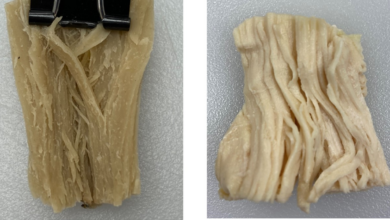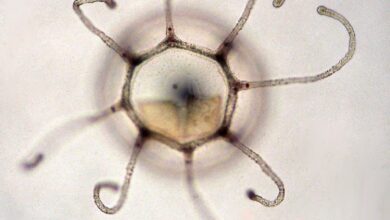Scientists identify molecule that could help drugs replace workouts

Scientists have identified a molecule in mice that they say reduces food intake and obesity, an advance that may one day provide some of the benefits of exercise in the form of a pill.
In the research, scientists, including those from Baylor College of Medicine in the US, conducted comprehensive analyses of blood plasma compounds from mice following intense treadmill running.
The study, published in the journal Nature last week, found that a modified amino acid called Lac-Phe was the most significantly induced molecule in mice following the exercise.
“Regular exercise has been proven to help weight loss, regulate appetite and improve the metabolic profile, especially for people who are overweight and obese,” Yong Xu, study co-author and professor of pediatrics- nutrition and molecular and cellular biology at Baylor, said in a statement.
“If we can understand the mechanism by which exercise triggers these benefits, then we are closer to helping many people improve their health,” Dr Xu said.
The Lac-Phe molecule, scientists say, is synthesised from lactate – a byproduct of strenuous exercise that is responsible for the burning sensation in muscles – as well as the amino acid phenylalanine, a building block of protein.
Researchers found that in mice with diet-induced obesity, a high dose of Lac-Phe suppressed food intake by about 50 per cent compared to control mice over a period of 12 hours without affecting their movement or energy expenditure.
When Lac-Phe was administered to the mice for 10 days, they say the molecule reduced cumulative food intake and body weight with loss of body fat and improved glucose tolerance.
The study also identified an enzyme called CNDP2 involved in the production of Lac-Phe .
It found that mice lacking this enzyme did not lose as much weight on an exercise regime as a control group on the same exercise plan.
Scientists also found “robust elevations” in plasma Lac-Phe levels following physical activity in racehorses and humans.
Sprint exercise, according to the researchers, induced the most dramatic increase in plasma Lac-Phe, followed by resistance training and then endurance training.
“This suggests that Lac-Phe is an ancient and conserved system that regulates feeding and is associated with physical activity in many animal species,” study co-author Jonathan Long said in a statement.
In further research, scientists hope to understand more details about how Lac-Phe mediates its effects in the body, including the brain.
“For example, older or frail people who cannot exercise enough, may one day benefit from taking a medication that can help slow down osteoporosis, heart disease or other conditions,” Dr Long explained.
“Our goal is to learn to modulate this exercise pathway for therapeutic interventions,” Dr Xu added.





